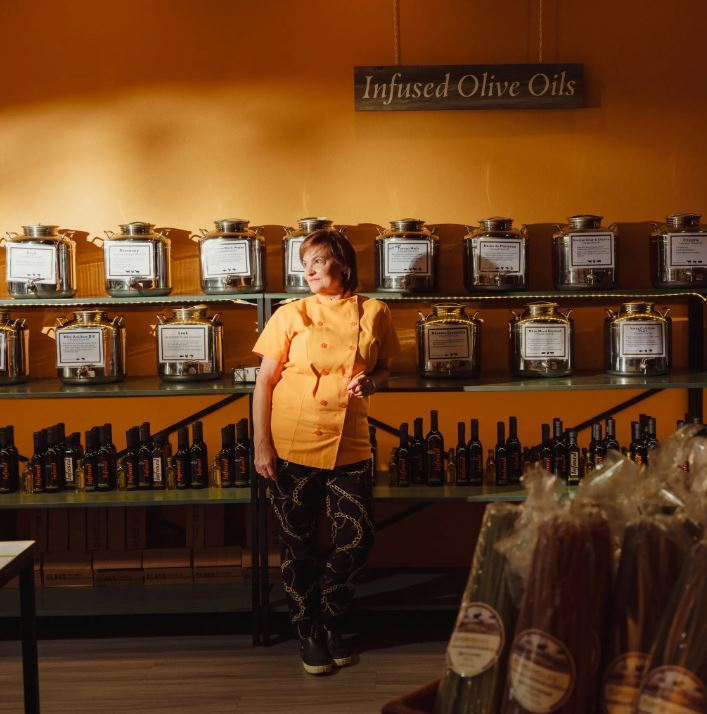Recent times have seen a noticeable change in the olive oil that Michelle Spangler purchases, blends, and infuses with flavors for her Dallas store. It’s not the quality of the product that has changed but its price. Global olive oil prices have surged to record levels, more than doubling over the past year.
While Ms. Spangler has a pricing agreement with her supplier to mitigate rapid cost increases, she still anticipates a 20% rise in expenses. As a result, she is planning to increase prices by 10 to 15% at her store, Infused Oils & Vinegars, early next year.
Olive oil, much like crude oil, is a commodity traded worldwide. Developments in one part of the world can have far-reaching consequences. A drought in Spain, the largest olive oil producer globally, has severely affected recent harvests. Adverse weather conditions have also impacted olive crops in other major producers like Italy, Greece, and Portugal. The United States primarily imports its olive oil from Spain and Italy.
This combination of factors has led to soaring prices, well above $9,000 per metric ton. These elevated prices are reflected in the cost of olive oil bottles, which have become a staple in many American households for cooking and drizzling on foods associated with a Mediterranean diet. For example, a 750-milliliter bottle of Bertolli’s extra virgin olive oil that was priced at around $9 in the grocery store last October has surged to approximately $11 today, marking a nearly 22% increase, as reported by IRI, a data provider.
Southern Europe, responsible for over half of global olive oil production, is to olive oil what the Middle East is to crude oil. However, the situation looks grim for the upcoming European harvest, which began this month. The European Commission recently stated that olive oil production in Spain, Italy, and other European Union countries is expected to recover only slightly from last season’s 40% decline. This limitation on supplies is further driving up prices.
The unpredictable and unusual weather patterns related to climate change, which have disrupted olive oil harvests in the Mediterranean, have also affected French wines, Florida oranges, and many other crops. This surge in food prices has played a significant role in the recent inflationary trend, putting pressure on household budgets and impacting economies worldwide.
Mr. Addison noted, “Everybody jumped on the bandwagon and immediately jacked prices.” He recently issued a purchase order for olive oil at $39.50 a gallon, compared to the previous $29.50.
Some companies, including Mr. Addison’s, are exploring options in the Southern Hemisphere for more olive oil. Nevertheless, it might be challenging to avoid the impact of Mediterranean shortages, as the increasing scarcity of supplies makes it tougher to strike deals on Chilean or Argentine olive oil.
Leah Bradley, the chief financial officer of Veronica Foods, an olive oil supplier in California, which serves clients like Ms. Spangler’s Infused Oils & Vinegars, said that South America and Australia had favorable crops last year, which helped offset some of the losses in Spain. She emphasized that relying on a single hemisphere, country, or region is not sustainable.
Because olive oil is produced in various parts of the world, sellers are more concerned about consumer willingness to pay than about a potential shortage.
At the Olive Oil Source, Mr. Addison hasn’t witnessed a decrease in sales, despite passing along the increased costs from suppliers. He noted a 20% increase in sales since July. He anticipates that the business will continue to thrive.
The willingness of consumers to shoulder higher prices has consistently defied predictions of a slowdown. However, rising prices for certain goods may soon prompt buyers to cut back.
Jesse Shapell, owner of Barboncino, a Neapolitan-style pizza restaurant in Brooklyn, New York, mentioned that he has noticed a significant increase in olive oil prices over the past few weeks. If the prices continue to rise, he may have to reduce the quantity of olive oil used in his dishes.
Similarly, Gray Brooks, the owner of Pizzeria Toro in Durham, North Carolina, explained that olive oil is essential for providing the desired flavor and texture to the pizza crust. The soaring cost of olive oil, sourced from Italy, compelled him to raise prices by 5 to 10% this month. As a result, most of his pizza prices increased by $1, with some, such as the lamb meatball and venison sausage pies, going up by $2.

